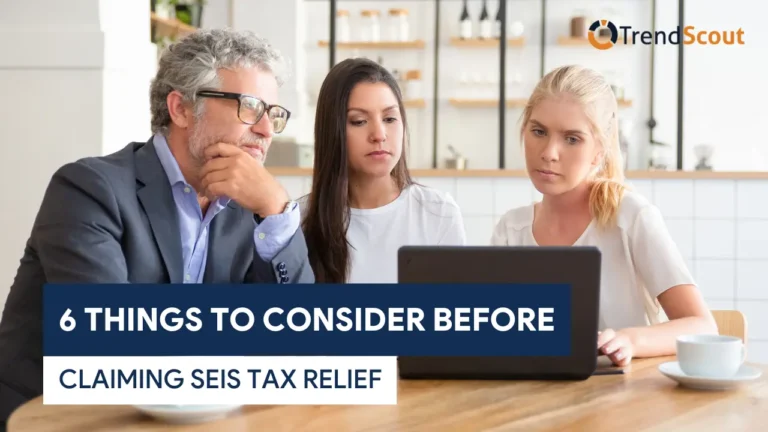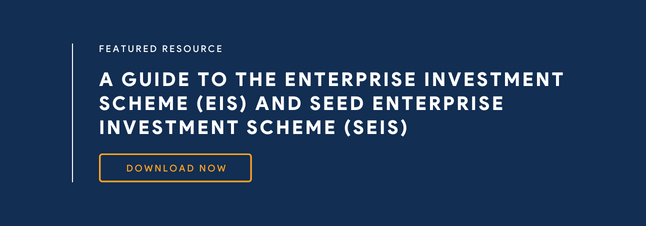When you invest in early-stage companies, you can often take advantage of SEIS tax relief.
And once you’ve invested directly into a qualifying venture or a SEIS fund, the next step is to claim your tax relief.
However, few people know what to consider when claiming their SEIS tax relief.
This article explains the six things you need to consider before claiming your SEIS tax relief.
Table of Contents
ToggleClaiming taxes relief for SEIS
With the Seed Enterprise Investment Scheme (SEIS), investors, including directors, can get a 50% tax relief on investments up to £100,000 and a Capital Gains Tax (CGT) exemption on any gains on SEIS shares.
To be eligible for income tax relief, your shares must be new, paid in full and in cash (not any other assets).
But before claiming your SEIS tax relief, below are the six things you need to consider.
Things You Need To Consider Before Claiming SEIS Tax Relief
1. What is carryback for SEIS
A carryback allows all or a part of the cost of shares bought in one tax year as though you purchased them in the prior tax year. The relief is then applied to the income tax liability from the previous year instead of the tax year the shares were acquired. The overriding limit for each year’s relief determines this.
A ‘carry back’ facility is available with SEIS and EIS investments. The tax relief from the previous year can be used to offset income tax as long as you have enough SEIS allowance in the year you want to ‘carry back’ to.
2. How to do ASA’s work for Seed Enterprise Investment Scheme tax relief
Advance subscription agreements (ASAs) are sometimes used to quickly raise capital for a company when it’s difficult to determine its value shares. ASA allows you to pay a subscription fee to a company at an early stage, with the shares to be issued later.
Like a convertible loan note, ASA is also a way for a startup to acquire a quick injection of cash because it tends to be a relatively short agreement that is easier to negotiate. Its advantage over a convertible loan note is that, unlike a convertible loan note, interest can’t be charged for the investment under the ASA to still qualify for SEIS tax reliefs, and an investor can’t ask for their money back.
If you’re an investor, you may choose ASA since the shares issued per ASA are usually issued at a discount. And unlike a convertible loan note, you can still benefit from SEIS tax reliefs when the shares are issued if the ASA is properly constructed.
3. When to expect to receive your SEIS3 certificates
A SEIS3 certificate is a document issued by the company you’ve invested in containing essential information about your investment. It’s usually received three months after the round is officially closed.
When investing through a fund, such as a venture capital trust, investors can expect a SEIS3 form for each of the underlying companies within it (unlike when investing directly into a company with SEIS), so it’s essential to have all relevant sheets on hand.
4. Which tax year your Seed Enterprise Investment Scheme certificate is for
SEIS3 certificates are associated with the tax year shares issued by the corresponding companies. And not the date of the investment or the date certificates is issued.
5. Where you can make your Seed Enterprise Investment Scheme income tax relief claim
SEIS income tax relief can be claimed on your paper tax return or online when submitting your self-assessment tax return. And also by mail using pages 3 and 4 of the SEIS3 certificates.
6. Claiming Seed Enterprise Investment Scheme relief on joint shares
When shares are issued to joint owners (such as a husband and wife). They are treated as though they had subscribed to the same amount for the same number of shares.
For example, if £4,000 is paid for 4,000 shares by you and your spouse. Each person is considered paid £2,000 for 4,000 shares, even if one paid the total cost.
To claim relief, each joint owner should obtain Form SEIS3.
Who can’t claim income tax relief on Seed Enterprise Investment Scheme
Its relief applies only to individuals (and not, for example, companies or trusts).
You can’t qualify for SEIS Tax Relief if:
- You’re “connected” to the company you’ve invested in by significant financial interest or employment (paid company director, partner, or employee).
- You have a 30% or greater interest in the company or any of its subsidiaries (voting rights, share capital, and the rights to assets).
- Uses SEIS to avoid tax.
- You invest via a third party when you have a substantial interest in the SEIS company.
- You get a better loan based on the SEIS investment at better terms than if you had not invested.
- The investment offers a guaranteed return and a plan to sell shares on a specific date. And protections against normal commercial risks relating to startup investments.
- Someone else has an option to buy the shares.
Summary
SEIS offers various benefits to startups and their investors.
However, investments carry some degree of risk.
While outlining some of the things you need in claiming your SEIS tax relief. This piece doesn’t qualify as tax advice.
Before investing, it can be worthwhile to speak to a qualified tax professional to ensure you make the best use of the range of tax reliefs on offer, or you may ask and schedule an appointment with us today.
Located in the heart of London, our team specialises in the government initiatives of the SEIS. Our platform also connects angel investors and founders, specialising in creating purposeful, considered partnerships that drive profit and growth.
Rest assured that our team will be with you at every step of your investment journey.



